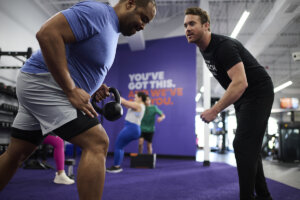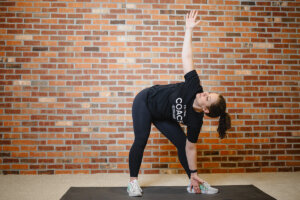Running is one of the most accessible activities out there. It can help build strong bones and improve cardiovascular health, and for many, running helps reduce stress and sharpen the mind.
No doubt, there are tons of health benefits that come from lacing up those sneakers and hitting the trail (or treadmill). But is weight loss one of them? How much do you have to run to lose weight? What if you don’t like running? We’re here to answer these questions and break down the pros and cons of running for weight loss.
Is running good for weight loss?
Running is certainly a great way to burn calories, and it’s a good cardiovascular activity. Weight loss aside, running — like any cardiovascular exercise — has a number of health benefits, both mental and physical. Regular running can help:
- Strengthen muscles and bones
- Increase endurance levels
- Lower the risk of heart disease or stroke
- Improve mental health, self-confidence, and overall quality of life
- Help you sleep better
However, the key to losing weight through running is by doing it consistently for weeks or months, so you have to be willing to stick with it.
“At least as an initial strategy, I generally don’t recommend running for weight loss,” says AF Coach Heather Anderson, CPT. “For the average fitness or gym newbie, running can be hard on the body and the benefits may not outweigh those drawbacks.”
For those who are just getting started with their fitness journey, it’s important to know about the downsides of running and be able to anticipate them ahead of time. Otherwise, you might see outcomes that are in direct contrast to your goals.
One example: “Running makes you HUNGRY,” Coach Heather says. “People often miscalculate how much they burned during their run and end up eating more than they need because of the increase in hunger signals.” For those on a weight-loss journey, it can mean actually gaining weight when you first start out. “That’s why being cognizant of this ahead of time and making a plan to refuel wisely can help prevent you from falling into this trap.”
Is running right for you?
The big question is: Do you like running? “The number one thing in determining how likely a person is to stick to their program is, do they enjoy the activity?” says Coach Heather. “For many people, running sucks, which means the chances they’ll stick to it over time (long enough to actually see weight loss) are low.”
Other factors that can help you decide if running is the right weight-loss strategy include your current health and fitness level, age, weight, and body mass index. The Evolt 360 or other body composition scan can help you know your total body fat percentage and muscle mass, and in turn, you can track if running is helping you gain or lose muscle and/or body fat.
If you do decide to start incorporating running into your fitness journey, it’s important to start slowly and carefully to avoid injury.
One way to determine your ideal run rate, according to Mayo Clinic, is to do a quick calculation of your maximum aerobic heart rate. If your health is generally good, subtract your age from 180 to get your target heart rate. To maximize fat burn, work to keep your heart rate below that number when you’re running.
Safety in fitness is a top priority. We recommend that you talk with your healthcare provider before you start running, especially if you have any conditions such as high blood pressure, heart issues, or a history of musculoskeletal injuries. Ask your doctor about any symptoms that you might want to watch for when you run.
The most effective way to workout for weight loss
Running can be a good addition to your overall fitness journey — but not a standalone strategy.
Getting the right mix of cardio and strength-training exercises is key. And while it might seem like aerobic exercises like running are the most effective way to lose weight, that’s actually not entirely true.
“Strength training rules in this domain,” says Coach Heather. That’s because you’re not only building muscle strength and size, but you’re also losing fat. So while running can be effective in losing weight at the beginning, it can mean losing weight from both muscle and fat. Losing that lean muscle can slow down your metabolism. The result: weight-loss plateaus.
“The more muscle mass you have, the higher your basal metabolic rate (or BMR),” says Coach Heather. “This means you burn more calories at rest and can maintain a healthy body weight more easily.”
Therefore, make sure you’re switching up activities for a well-rounded fitness routine. For example, if you run three days a week, incorporate other exercises like yoga, swimming, weight or resistance training, HIIT, cycling, Pilates, and more.
Check out these workouts to determine what kinds of routines are most effective — and enjoyable! — for you:
Not sure how to measure the progress you’re making along your fitness journey? Get a more holistic picture of your health with the Evolt 360. Download the Anytime Fitness AF App (available on iOS and Google Play) to learn more.



